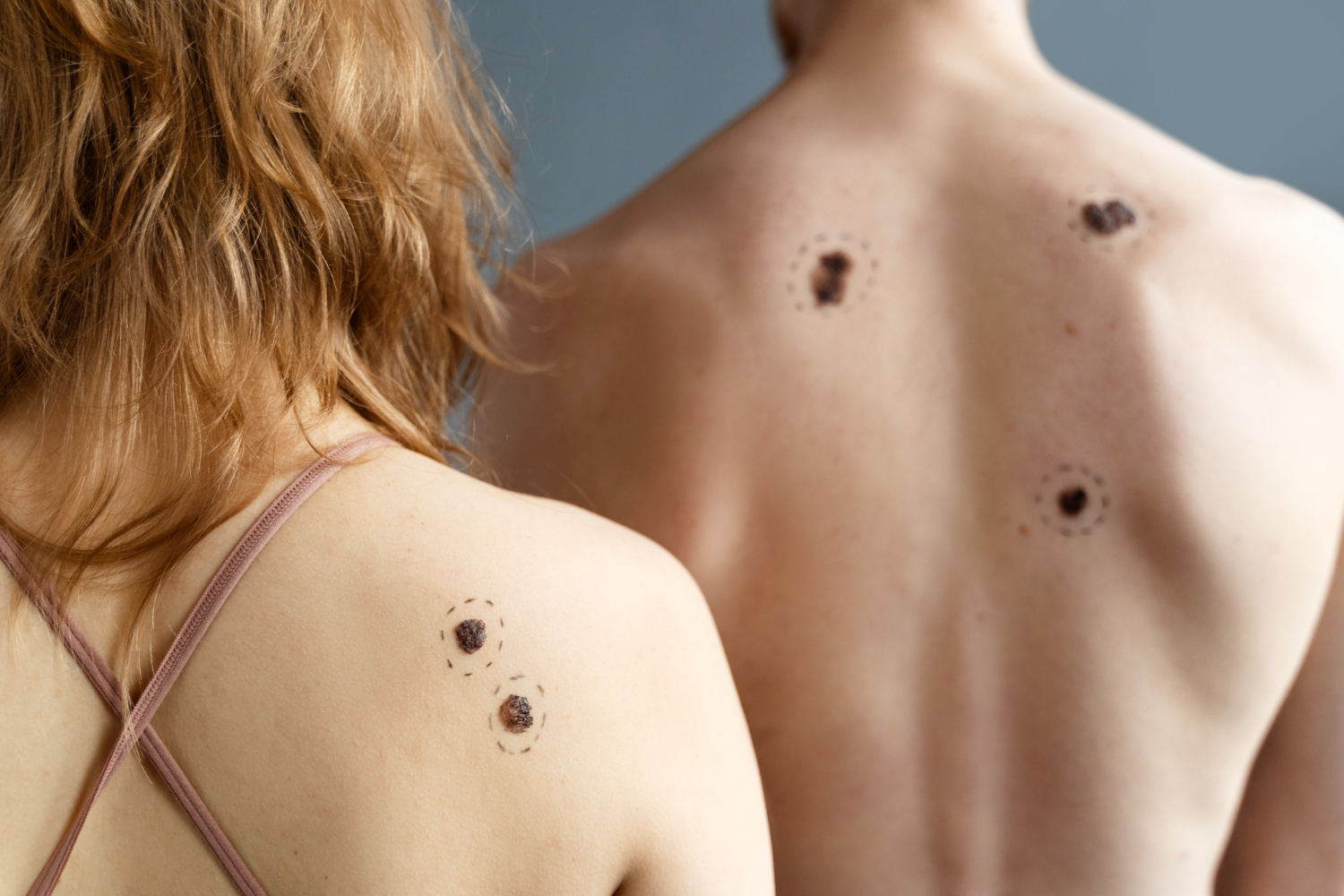Most people notice small spots, patches, or marks on their skin at some point. Some of these are moles, while others are birthmarks. On the surface, the two can look alike, which is why they are often confused. Both are common, usually harmless, and part of what makes our skin unique. However, knowing the difference between a mole and a birthmark is important because it helps you understand your skin better and recognize when something might need medical attention.
The term “mole vs birthmark” is more than just a comparison—it is a practical way to talk about two types of skin markings that people often wonder about. While moles usually form as clusters of pigmented cells, birthmarks develop for different reasons and are often present from birth. By exploring how each forms, how they look, and what they might mean for your health, you can gain confidence in identifying them. More importantly, you’ll learn when it’s best to see a doctor.
Understanding What a Mole Really Is
A mole is a spot on the skin caused by a cluster of cells that produce pigment. Instead of being spread evenly, these pigment-producing cells gather together, creating a darker mark. Moles can appear anywhere on the body and often range in color from light brown to almost black.
There are several types of moles, each with its own traits. Some are flat, smooth, and small, while others may be raised and slightly rough in texture. People can be born with moles, but many develop later in life, particularly during childhood and adolescence. Hormonal changes, such as those during pregnancy or puberty, can sometimes make new moles appear or cause existing ones to change.
Although most moles are harmless, they remain a point of focus for doctors because certain changes can signal skin health concerns, such as melanoma. This is why understanding the nature of moles is so important.
Birthmarks Explained in Simple Terms
Unlike moles, birthmarks are usually present at birth or appear shortly afterward. They are skin marks caused by differences in pigment or blood vessels during development. Birthmarks come in two main types: pigmented and vascular. Pigmented birthmarks are usually shades of brown, gray, or black, while vascular birthmarks may be pink, red, or purple.
Unlike moles, which often appear later in life, birthmarks typically remain stable or change gradually over time. Some fade with age, while others stay throughout a person’s life. Most are harmless and simply part of someone’s natural appearance.
The key point is that birthmarks are not clusters of pigment cells in the same way moles are. Instead, they form because of differences in how skin develops before or just after birth.
Key Differences Between a Mole and a Birthmark
At first glance, telling a mole from a birthmark can be tricky. Both are skin marks that vary in size, color, and shape. However, understanding their differences makes the task easier.
One of the main differences is timing. Moles can develop at any point in life, while birthmarks are present from birth or shortly after. Another distinction is appearance. Moles are typically small, round, and darker in color. Birthmarks, on the other hand, can cover larger areas and may appear in lighter shades or even as red or purple patches.
Texture also plays a role. Moles can be flat or slightly raised, while many birthmarks are smooth and flush with the skin. Location patterns matter too. Moles can pop up almost anywhere, sometimes even in clusters, whereas birthmarks often appear in distinct patches.
When comparing mole vs birthmark, the easiest way to tell them apart is to consider when the mark appeared, how it looks, and whether it has changed over time.
When to Pay Extra Attention
While most moles and birthmarks are harmless, it’s wise to know when they deserve closer attention. A mole that changes in color, shape, or size should not be ignored. Signs like irregular borders, uneven coloring, or rapid growth may indicate that a mole needs medical review.
Birthmarks rarely cause health issues, but in some cases, large or unusual ones may require monitoring. For example, very large pigmented birthmarks may carry a slightly higher risk of developing problems later in life. Vascular birthmarks, such as port-wine stains, may sometimes require treatment for cosmetic or medical reasons.
Regular skin checks—whether self-exams at home or professional check-ups—help catch changes early. A dermatologist can determine whether a mole or birthmark is normal or something that needs further care.
Caring for Skin with Moles or Birthmarks
Caring for skin with moles or birthmarks does not require complicated routines, but a few mindful habits make a big difference. Everyday skin care, such as gentle cleansing and moisturizing, helps maintain overall skin health.
One of the most important steps is sun protection. Both moles and birthmarks can become more noticeable with sun exposure, and excessive UV radiation can raise the risk of skin damage. Using sunscreen, wearing protective clothing, and avoiding peak sun hours help protect the skin.
When in doubt about a mole or birthmark, consulting a dermatologist is always a safe choice. A professional can offer reassurance, monitor changes, or recommend treatment if necessary. This balance of self-care and professional advice ensures that you maintain both health and peace of mind.
Conclusion
The comparison of mole vs birthmark is not just about spotting visual differences—it is about understanding your skin and taking care of it responsibly. Moles form from clusters of pigment cells and can appear at different stages of life, while birthmarks are usually present from birth and caused by natural variations in skin or blood vessels.
By learning their differences in appearance, timing, and texture, you can better recognize each and know when medical advice is needed. Most are harmless, but regular checks and mindful skin care give you the confidence to protect your health.
In the end, whether you have a mole, a birthmark, or both, they are part of what makes you unique. Paying attention, protecting your skin, and seeking medical advice when necessary is the best way to ensure lasting skin health.
My name is Mustafa, and I have been blogging for over 5 years. I am passionate about sharing complete, accurate, and helpful information with my readers. Along with managing content on The Matcha Read, I also contribute blog posts to premium websites. My goal is to provide valuable insights in a clear and easy-to-understand way, so every reader walks away with useful knowledge.










